Best Dumbbell Workout to Train Your Deltoids – Born Tough
Are you looking to build up your deltoids by working out? Dumbbells are the perfect tools to strengthen your shoulder muscles. You can also customize your dumbbell workout routine to focus on specific shoulder muscles. This article provides a list of the best dumbbell workouts to train your deltoids.
Before going into the best dumbbell workouts, it is good to know a little bit about shoulder anatomy.
1. Introduction of Shoulder Anatomy
Shoulders are a complex network of muscles, each playing a critical role in moving the arms and maintaining posture. The shoulder consists of deltoid muscles connected to ball-and-socket joints that connect your arms with your torso. Deltoid is derived from the greek letter “Delta, Δ.” Deltoid muscles in your shoulders work together to ensure power and stability in your upper body.
2. How Many Deltoids Do You Have?
Deltoid muscles are categorized into three types based on their location on the body:
2.1. Anterior Deltoid
At the front of your shoulders and upper arms, the anterior deltoid is responsible for inward rotations and front raises.
2.2. Lateral Deltoid
These muscles are located on the side of your upper arm, the medial/lateral deltoids assist arm abduction during lateral raises.
2.3. Posterior Deltoid
At the back of the shoulder and upper arm, the posterior deltoid helps ensure good posture.
3. Best Dumbbell Workout to Train Your Delts
Dumbbell is a highly effective and versatile tool for developing well-defined deltoid muscles, making them an excellent choice for anyone looking to strengthen their shoulders. In this regard, here are 10 of the best dumbbell exercises that help you in improving your posture and shoulder strength.
3.1. Dumbbell Push Press (DPP)
The dumbbell push press is a variation of the traditional barbell push press that uses two dumbbells. This exercise is commonly used in Olympic weightlifting to build strength in the entire body.
The DPP is a compound exercise that requires coordination between several muscle groups, including the triceps, hamstrings, glutes, quads, and core. Practicing the DPP can help improve upper body strength, power, and stability.
How to Perform the DPP
Here’s a step-by-step guide on how to perform the DPP:
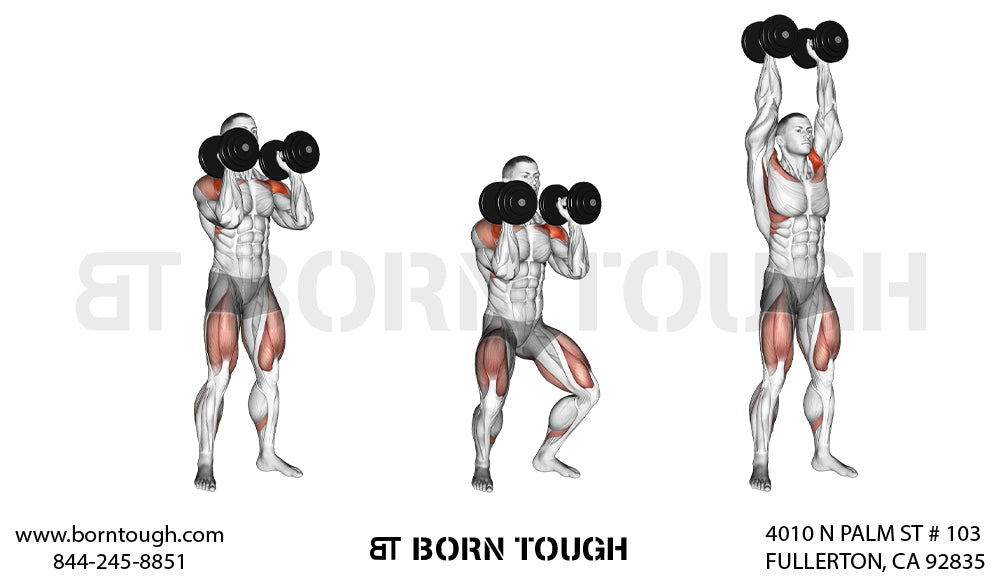
- Choose dumbbells you can lift without injuring yourself.
- Start with the dumbbells resting lightly on your shoulders, with your palms facing each other and your feet spread apart at hip-width.
- Brace your core and keep your back straight while bending your knees slightly to generate momentum.
- Bounce off your heels while extending your hips and knees as you hold the dumbbells.
- Slowly lower the weights back onto your shoulders.
How Can DPP Help Strengthen Your Delts and Body?
The dumbbell push press targets several muscle groups in the upper body, including the deltoids. This exercise requires exerting the deltoids, especially the front and lateral delts.
Besides the deltoids, the DPP also engages the triceps and helps work the upper arm muscles. Dumbbells also allow for a greater range of motion than a barbell, making it easier to target specific areas of the deltoids.
Because the DPP involves working the legs, hips, and arms simultaneously, it is an effective exercise for improving overall strength and stability.
Muscles Worked in Dumbbell Push Press
- Deltoids
- Triceps
- Biceps
- Forearms
- Upper Back (Trapezius)
- Forearms
- Pectoralis major and Pectoralis minor (chest muscles)
- Core
3.2. Arnold Dumbbell Press
The Arnold dumbbell press targets multiple muscle groups in the upper body. Developed by the legendary bodybuilder Arnold Schwarzenegger, it is considered one of the most effective deltoid exercises.
How to Perform the Arnold Dumbbell Press
A bench and two dumbbells of appropriate weight are required to perform the Arnold dumbbell press.
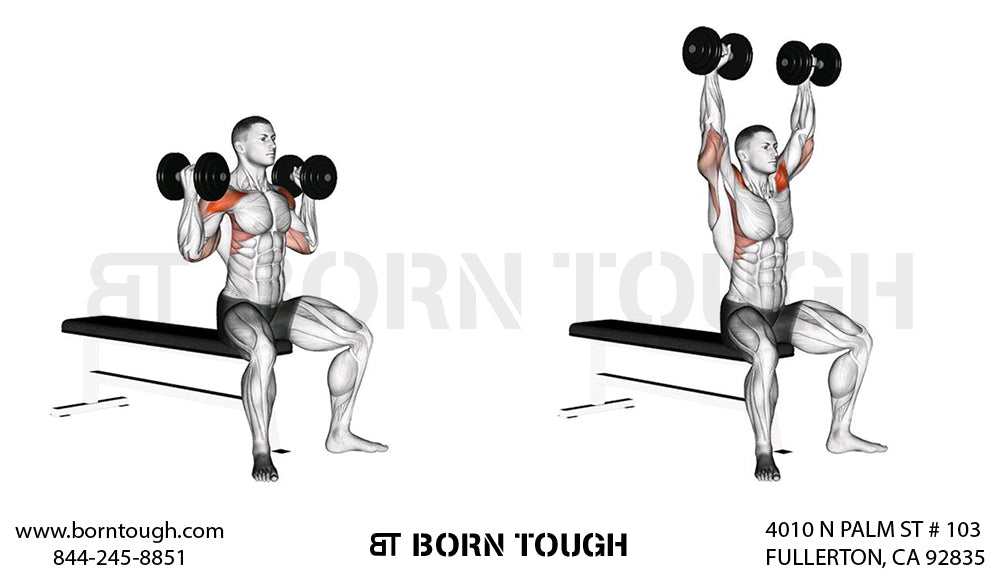
Here’s a step-by-step guide on how to perform the Arnold dumbbell press:
- Sit on a bench and grab a pair of dumbbells with your palms facing inward towards your body.
- Keep your back straight and lift the weights to your chest.
- As you raise the weights, rotate your hands until your palms slowly face outward.
- Exhale and extend your arms overhead, locking your elbows at the top.
- Pause and inhale as you lower the weights back to your chest.
- Repeat the movement for your desired number of repetitions.
Muscles Worked in Arnold Dumbbell Press
- Triceps
- Deltoids
- Trapezius
How Does the Arnold Dumbbell Press Help Strengthen Your Shoulders?
The Arnold dumbbell press is an effective exercise for strengthening your shoulder muscles and increasing your range of motion without putting too much stress on the body.
The Arnold dumbbell press targets the anterior, medial, and posterior deltoids to encourage muscle growth and develop your stabilizer muscles.
The Arnold dumbbell press can also improve your posture and performance in other exercises like deadlifts, pull-ups, and rows.
Precautions While Doing Arnold Dumbbell Press
However, since this exercise works several major shoulder muscles, it also carries a higher risk of injury if not performed correctly. Avoid increasing the weight of the dumbbells too early. If you feel shoulder pain, consult a doctor or personal trainer before continuing with this exercise.
Tip to Perform Arnold Dumbbell Press
Make sure to slowly rotate both hands and arms a full 180°.
3.3. Bent-Over Dumbbell Reverse Fly
If you’re looking to improve your upper body strength, consider incorporating the bent-over dumbbell reverse fly into your routine. This exercise targets the posterior deltoids, rhomboids, and trapezius.
If properly executed, a bent-over dumbbell reverse fly can improve your overall posture and upper body strength.
How to Perform the Bent Over Dumbbell Reverse Fly?
Here’s a step-by-step guide on how to perform the bent-over dumbbell reverse fly:
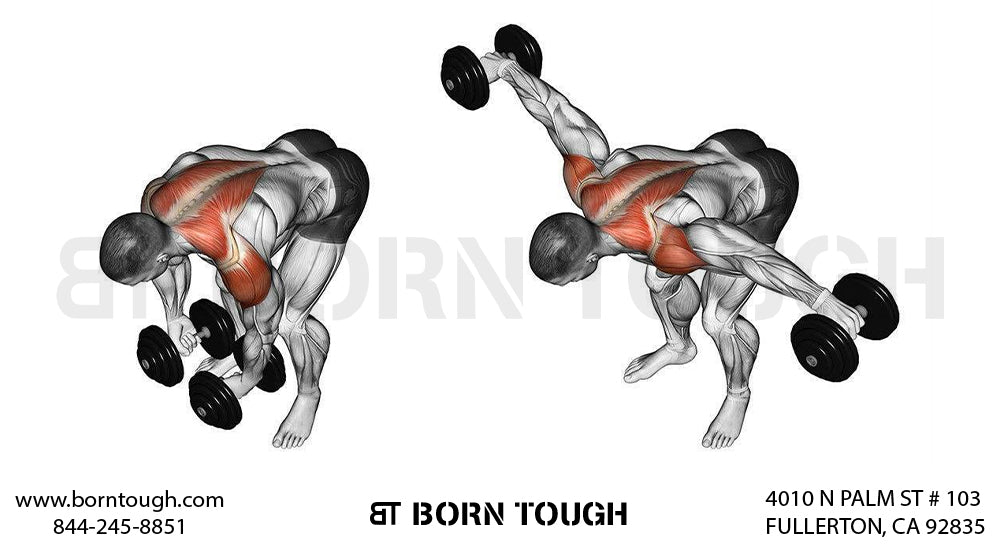
- Stand with your feet apart at shoulder-width and grab a pair of dumbbells.
- Bend until you are level with the hips, bringing your chest forward and almost parallel to the floor. Let the weights hang while tightening your core, keeping your back straight, keeping your palms facing each other, and slightly bending the knees.
- While exhaling, raise both arms to the sides while slowly bending your elbows.
- Squeeze your shoulder blades together as you pull them toward the spine.
- Inhale and lower the weights back to the starting position without hunching your shoulders and keeping your chin tucked in to keep your spine relaxed.
- Repeat the movement for desired repetitions.
Muscles Worked in Bent-Over Dumbbell Reverse Fly
- Posterior Deltoid
- Rear Deltoid
Benefits of the Bent-Over Dumbbell Reverse Fly
The bent-over dumbbell reverse fly targets your rear shoulders and upper back muscles, improving your posture. It can also reduce pain and improve flexibility in the shoulders and upper back.
Incorporating the bent-over dumbbell reverse fly into your regular workout routine will make it easier to perform daily activities.
Precautions While Doing Bent Over Dumbbell Reverse Fly
It’s important to start with lighter weights and use proper form to prevent injury. If you experience pain or discomfort during the exercise, it’s best to consult a doctor or personal trainer before determining whether it is safe to continue.
3.4. Dumbbell Front Raise
Front raise dumbbell exercise is designed to target the front and side deltoids, as well as the upper chest and biceps, providing a full upper body workout. By lifting weights from a standing position, you can engage your upper body muscles in a controlled and effective manner, building strength and endurance over time.
In addition, dumbbell front raise is a versatile exercise that can be performed in a variety of ways, making it suitable for both beginners and experienced weightlifters.
How to Perform the Dumbbell Front Raise?
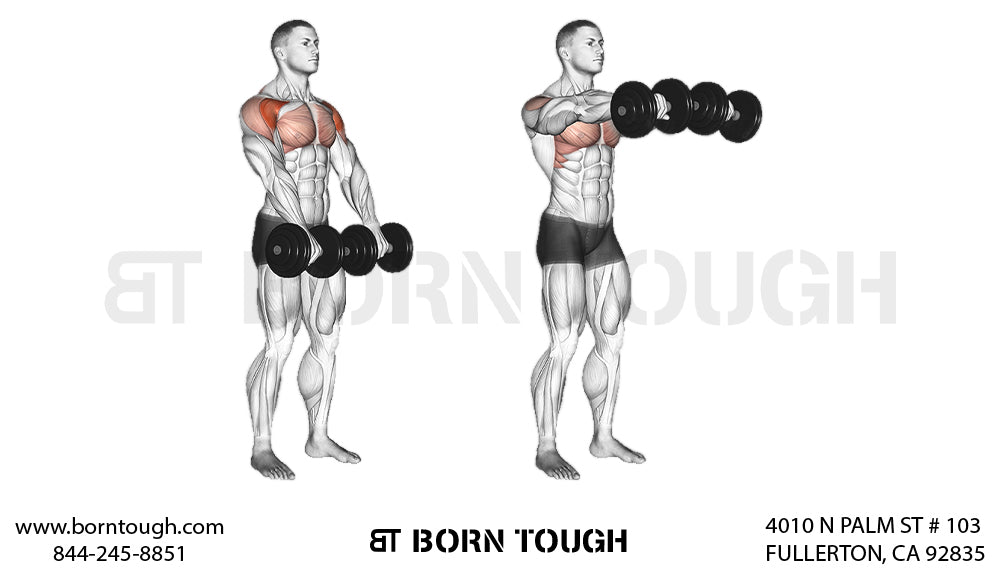
Here’s a step-by-step guide on how to perform dumbbell front raises:
- Hold a dumbbell in each hand.
- Stand with your feet spread apart at hip-width with your toes slightly turned out.
- Keep your back and neck straight.
- Bend your elbows slightly and evenly distribute weight throughout your feet.
- Loosen your shoulders and hips and engage your core.
- Slowly lift the dumbbells with your palms facing your legs.
- Align your elbows with your shoulders or slightly below shoulder level.
- Lower the dumbbells slowly.
- Repeat for the desired number of reps.
To Get Optimal Results
Incorporate front dumbbell raises periodically into your weightlifting routine per week, leaving room for recovery days between sessions. It’s recommended you start with medium dumbbells, gradually increasing their weight as you get stronger. If you have any prior shoulder injuries, get clearance from your doctor before attempting this exercise.
How Dumbbell Front Raise Can Be Helpful for Shoulder Muscles?
The dumbbell front raise can increase strength without overloading your nervous system. The front dumbbell raise also can strengthen the stabilizing muscles surrounding your shoulders, improving joint stability and control and reducing the risk of injury.
3.5. Dumbbell Lateral Raise
If you’re looking for an effective way to target your deltoids and make them more efficient, the dumbbell lateral raise is worth considering exercise. This exercise is designed to primarily target the head of the deltoid muscles, which are responsible for shoulder abduction and lateral movement.
The primary muscles targeted during the exercise are the lateral deltoids, which are located on the side of the shoulders, along with the supraspinatus and trapezius muscles. exercise. Must write in a different way that is engaging.
How to Perform the Dumbbell Lateral Raise?
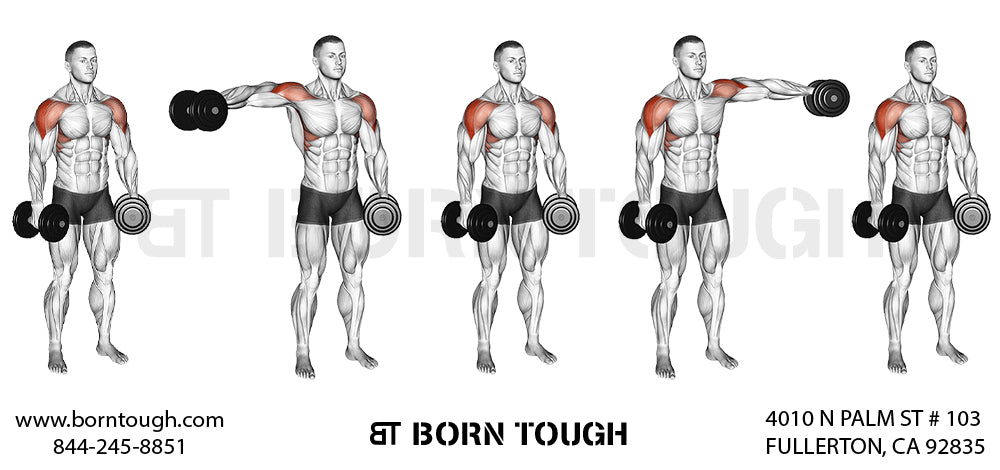
Here is a step-by-step guide on how to perform dumbbell lateral raises:
- Stand with your feet spread apart at hip-width.
- Hold a dumbbell in each hand with your palms facing your body and your extended arms resting at your sides.
- Choose dumbbells that you can lift without injuring yourself.
- Make sure there is enough space around you to raise both arms.
- Keeping your arms almost completely straight, raise both dumbbells along your sides until they are at shoulder height.
- Hold the weights overhead for a second, then slowly lower them back to your sides.
- Remember to keep your head upright and control your breathing. Inhale as you lift the weights and exhale as you lower them.
- Repeat.
How Does the Dumbbell Lateral Raise Help Your Deltoids?
The dumbbell lateral raise can have the following benefits for your deltoids:
Targets Shoulder Muscles
Dumbbell lateral raises specifically target the shoulder muscles, including the deltoids, traps, and rotator cuff muscles. This exercise can help increase the size and definition of your shoulder muscles, making them appear more toned.
Improves Stability
Dumbbell lateral raises strengthen the rotator cuff muscles responsible for stabilizing the shoulder joints.
Corrects Muscle Imbalances
Dumbbell lateral raises can also correct muscle imbalances in the shoulders. If one shoulder is weaker than the other, performing dumbbell lateral raises can strengthen the weaker side and balance the distribution of strength between shoulders.
Dumbbell lateral raises can help you build shoulder muscles in your shoulders without putting too much strain on other body parts. However, it can be performed almost anywhere and is suitable for all fitness levels.
3.6. Dumbbell Upright Row
The dumbbell upright row is effective in targeting the deltoids, trapezius, and biceps. It is a popular choice among weightlifters and strength trainers due to its ability to develop upper body strength and improve posture. The exercise involves lifting weights from a standing position and using controlled movements to engage the targeted muscle groups.
How to Perform the Upright Row?
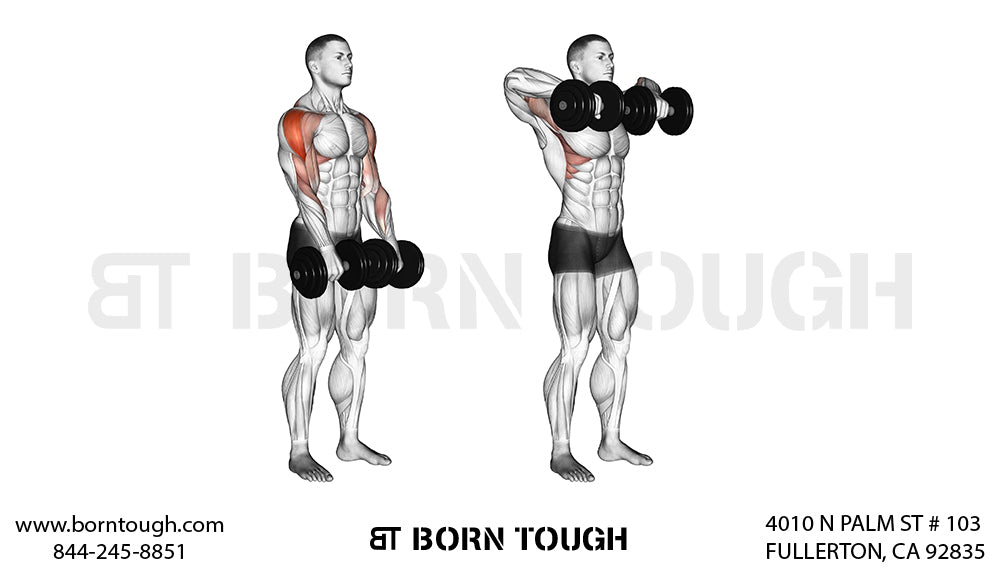
Here is a step-by-step guide on how to perform the dumbbell upright row:
- Stand with your feet spread apart at shoulder-width and hold dumbbells in both hands.
- The dumbbells should rest in front of your thighs with your arms fully extended and hands spread apart wider than shoulder-width.
- Engage your core and keep your back straight as you lift the dumbbells just below your chin.
- Keep your elbows pointing to the sides as you lift the weights and squeeze your shoulder blades together at the top of the movement.
- Slowly lower the dumbbells back to the starting position.
- Repeat the exercise for the desired number of reps, usually 8-12 reps for strength training or 12-15 reps for muscle endurance.
Benefits of the Dumbbell Upright Row
The dumbbell upright row targets several muscle groups in the upper body, including the back, biceps, and shoulders. This exercise accelerates muscle growth and increases overall strength. It also targets the biceps which help you develop more powerful arms, improving your performance in other exercises and activities.
This exercise can help improve upper body stability and strength, by incorporating the upright row into your workout routine, you’ll be able to improve your posture, and reduce the risk of injury.
Tips to Perform Dumbbell Upright Row
It’s important to maintain proper form when performing a dumbbell upright row exercise to avoid injury. Make sure to keep your shoulders relaxed and avoid lifting heavy weights to avoid putting strain on the neck and shoulders. By adding the dumbbell upright row to your workout routine, you can safely and effectively target your shoulder and upper back muscles for a stronger, more toned physique.
3.7. Dumbbell Incline Y Raise
The dumbbell incline Y raise is a highly effective exercise for targeting and strengthening the lateral, trapezius, and posterior deltoid muscles of the shoulders.
In addition to increasing the range of motion in the shoulders, the dumbbell incline Y raise can also help correct imbalances in the shoulder muscles and improve overall shoulder stability. It’s a great exercise for anyone looking to build strong, healthy shoulders and improve their posture.
How to Perform the Dumbbell Incline Y Raise?
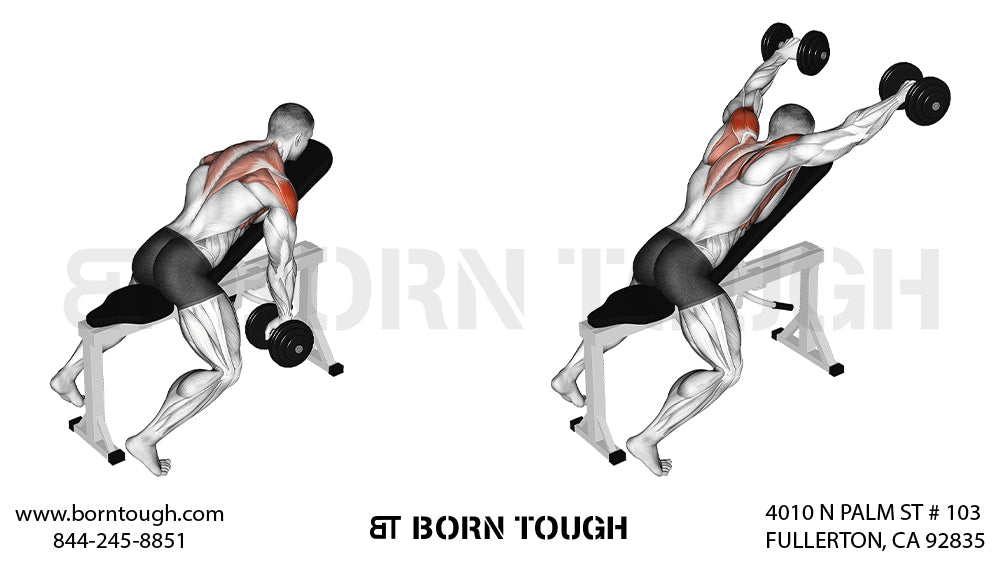
Here’s a step-by-step guide on how to perform this simple yet effective exercise dumbbell incline Y raise:
- Start by lying face down on an incline bench with your chest and stomach supported by the bench. The bench should be positioned at a 45° angle.
- Grab your light or medium dumbbells in each hand and point your arms straight towards the floor with your palms facing each other.
- Slowly lift your arms out to the sides, keeping your arms straight and forming a “Y” shape with your body.Your arms should be slightly angled and positioned in front of your body.
- When your arms are raised above your head, hold this position for a moment.
- Slowly lower the dumbbells back to the starting position.
How Dumbbell Incline Y Raise Train Your Deltoids?
Dumbbell incline Y raises target your shoulder and back muscles, resulting in improved strength, stability, and flexibility. This exercise can also help to improve your posture by strengthening the muscles that support your upper body.
By using light or medium weights, you can focus on strengthening the posterior shoulder and rotator cuff muscles, while improving the stability and flexibility of your deltoids.
3.8. Dumbbell Clean and Press
This compound movement combines two distinct motions, resulting in a total-body workout that targets everything from your hamstrings and calves to your biceps, glutes, and spinal erectors.
While bodybuilders often favor the dumbbell clean and press for its muscle-building benefits, anyone can benefit from incorporating this exercise into their fitness routine. By working your entire body in a single movement, the dumbbell clean and press help improve overall strength and power while also promoting balanced muscle development.
How to Perform the Dumbbell Clean and Press?
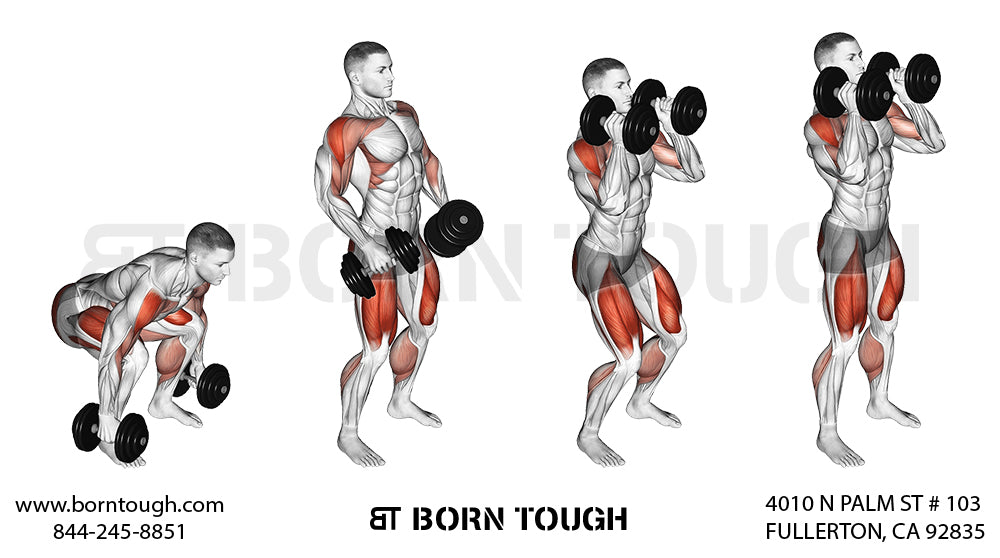
Here’s a step-by-step guide on how to perform the dumbbell clean and press:
- Place two dumbbells on the floor along both sides of you and stand with your feet spread apart at shoulder-width.
- Keeping your back straight, bend down to grab a dumbbell with both hands.
- Stand up suddenly, lifting the dumbbells as you rise.
- As you lift the dumbbells, shrug your shoulders and duck to catch the dumbbells at the bottom of a squat position, with one head of each dumbbell resting near your shoulders.
- From the squat position, stand up fully, extending your hips and knees.
- Keep your legs spread apart at the hip-width and raise both dumbbells over your head, keeping your back straight, core engaged, and torso and legs in place.
- Once you’ve fully extended your arms, slowly bring the dumbbells back to rest on your shoulders.
- Lower the dumbbells back to the floor to complete one dumbbell clean and press rep.
Benefits of the Dumbbell Clean and Press
By targeting your body’s major muscle groups, the dumbbell clean and press can help build strength and endurance. It also works on both sides of your body equally, which helps address muscle imbalances. Many other benefits of the dumbbell clean and press include the following:
- Improves performance when pulling, squatting, and pressing
- Improves endurance when performing more reps
- Improves speed and timing
- Builds up leg, core, and arm strength
But most importantly, the dumbbell clean and the press is an excellent way to build leg, core, and arm strength while also targeting your deltoids. So if you’re looking to add some serious mass and definition to your shoulders, must try dumbbell clean and press!
3.9. Dumbbell Shoulder Press
The dumbbell shoulder press is a classic exercise that is highly effective for building strength and tone in the upper body, particularly the deltoids. This exercise involves lifting weights from shoulder height to above your head, using controlled movements to engage the targeted muscle groups.
The primary muscles targeted during the exercise are the anterior and lateral deltoids, along with the triceps, upper pecs, and traps. Additionally, the stabilizing muscles of the shoulder and core are engaged throughout the movement, making this exercise a highly effective full-body workout.
How to Perform the Dumbbell Shoulder Press?
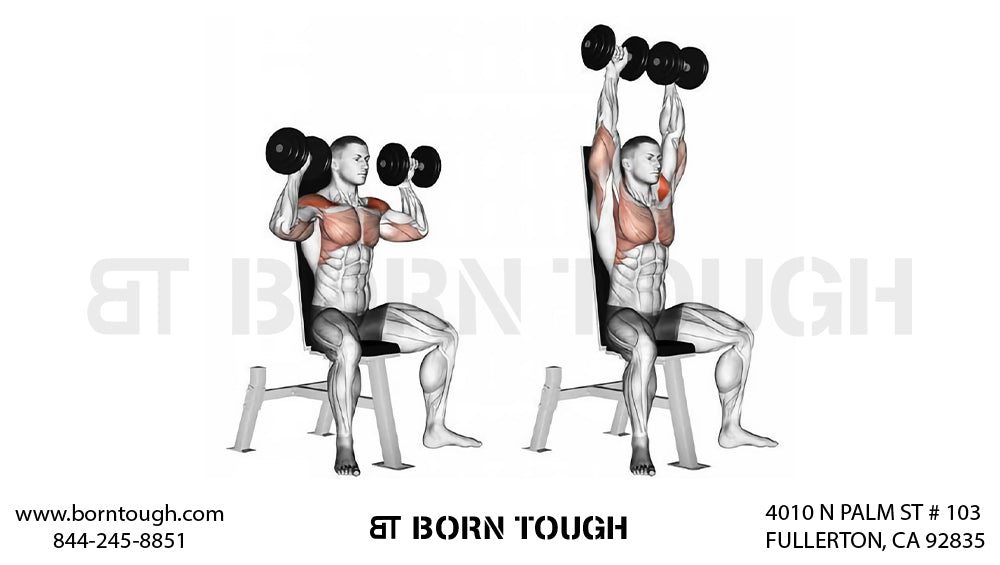
- Sit on a bench with a raised backrest and grab a pair of dumbbells.
- Lift the dumbbells to your shoulders.
- Inhale and brace your core.
- Extend your arms and raise the dumbbells while exhaling.
- Maintain control throughout the movement to avoid injury.
- Once you reach the top of the movement, take a deep breath and hold the dumbbells over your head.
- Slowly lower the dumbbells back to your shoulders while inhaling as you go.
- Repeat the exercise for several reps.
How Does the Dumbbell Shoulder Press Help Train Your Deltoids?
The dumbbell shoulder press targets the muscles in the shoulders, triceps, and upper back. The dumbbell shoulder press can benefit your deltoids in the following ways:
Increased muscle mass
Regularly practicing the dumbbell shoulder press will increase the size and strength of the deltoid muscles.
Improved shoulder stability
The dumbbell shoulder press requires you to engage your core muscles and maintain good posture, which can improve shoulder stability and reduce the risk of injury.
Greater range of motion
This exercise requires you to lift weights from shoulder height to above your head, which can increase your shoulder’s range of motion and flexibility.
Good posture
Strong, toned shoulders help improve your posture and reduce the risk of neck and back pain.
3.10. Dumbbell Face Pull
The dumbbell face pulling targets the rear deltoids and upper body muscle groups. It targets the often-neglected posterior deltoids of the shoulder, this exercise not only prevents muscular imbalances but also promotes overall shoulder strength.
You can easily perform the dumbbell face pull exercise by using a cable pulley machine. It is performed by pulling the weight straight toward your forehead.
How to Perform the Dumbbell Face Pull?
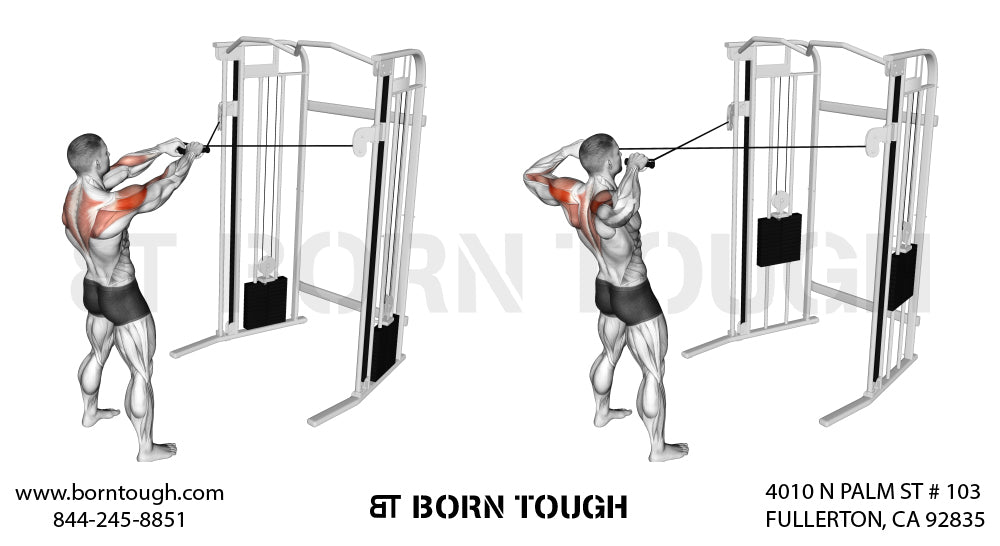
Here is the step-by-step guide on how to perform the dumbbell face pull using a cable pulley system:
- Set the cable pulley system to the highest setting and attach the rope.
- Stand facing the cable with your feet spread apart at shoulder-width.
- Grip the rope with both hands and step backward to create tension.
- Bring your hands up to the starting position.
- Inhale and engage your core, shoulders, back, and glutes.
- Keep your back straight and knees slightly bent.
- Squeeze your upper back and shoulder blades together to initiate.
- Pull the cable toward your face, forming a 90° angle between your forearms and upper arms.
- Pause briefly, then slowly return to the starting position while exhaling.
- Repeat for the desired number of repetitions.
How Do the Dumbbell Face Pull Help You?
The dumbbell face pulling targets the rear deltoids, rhomboids, and middle trapezius muscles. Incorporating this exercise into your workout routine will ensure you develop a well-rounded physique suited for a variety of physical tasks.
The dumbbell face pull also improves your posture, reduces muscle imbalances, engages the core muscles, and improves stability and balance.
4. FAQs
4.1. What is the Most Effective Deltoid Exercise?
The most effective deltoid exercise can vary depending on individual goals and preferences, but some examples include the dumbbell shoulder press, lateral raises, and upright rows. These exercises target different parts of the deltoid muscles and can be done for building shoulder strength.
4.2. Are Deltoids Hard to Grow?
The deltoids are a challenging muscle group to grow due to their small size and being heavily involved in many upper-body movements. However, with proper training, nutrition, and consistency, you can significantly grow your deltoids.
4.3. What Are the Functions of Deltoids?
The deltoid muscles serve multiple functions, including the abduction of the arm (movement of the arm toward the body’s midline) and compensation for lost arm strength due to injury. They also involve the flexion, extension of the arm, and stabilization of the shoulder joint during lifting or carrying weights. These shoulder muscles also play a crucial role in raising the arm overhead and preventing dislocations, making them essential for various activities of daily living and athletic performance.
5. Takeaway
Dumbbells are a wonderful and versatile tool for targeting your deltoids, and incorporating them into your workout routine can help you achieve well-rounded, strong, and healthy shoulder muscles. By understanding the different parts of the deltoids and performing exercises that target each area, you can maximize your muscle gains and reach your fitness goals. However, It’s important to maintain proper form and to gradually increase weight and intensity to avoid injury and ensure consistent progress.
“This article is originally posted on borntough.com, and borntough.com own the sole copyright on this article. If you read this article outside borntough.com, please report this website to the authority because they have stolen the content from borntough.com and violated borntough copyright”
-
Activewear, Daily Deals, Gifts, Leggings
3-Pack Seamless Push Up High Waisted Leggings
Original price was: $65.00.$56.88Current price is: $56.88.


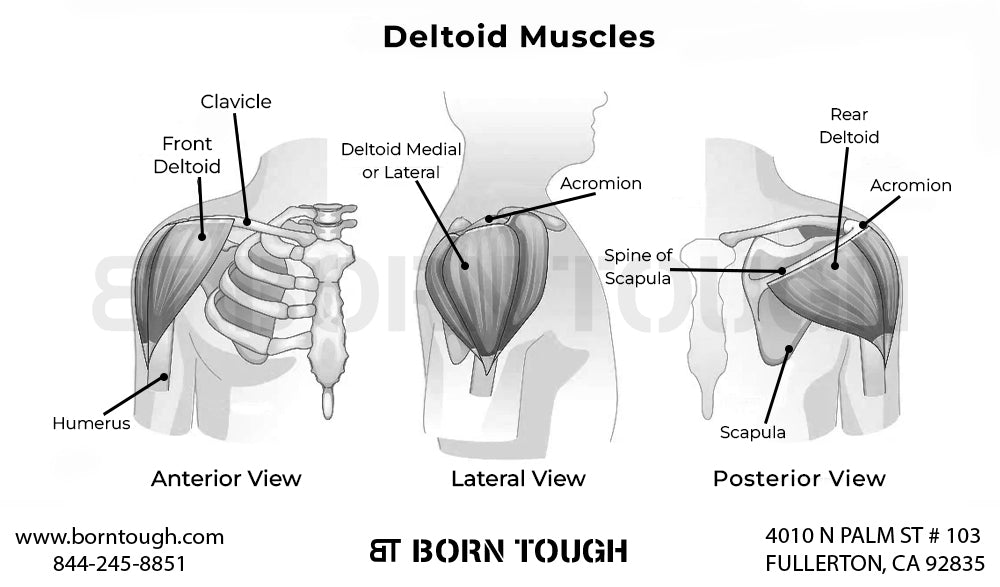

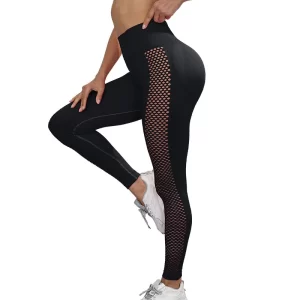






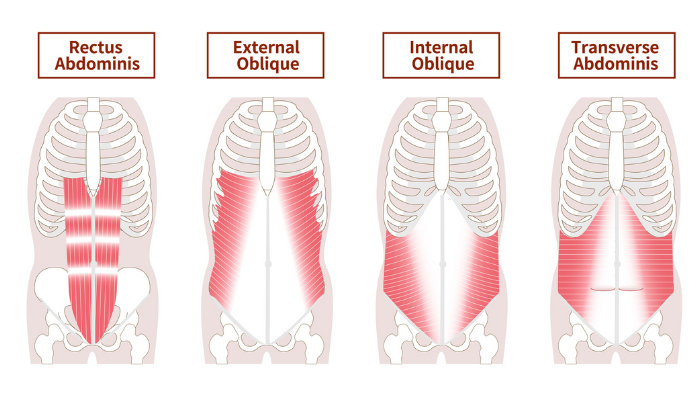

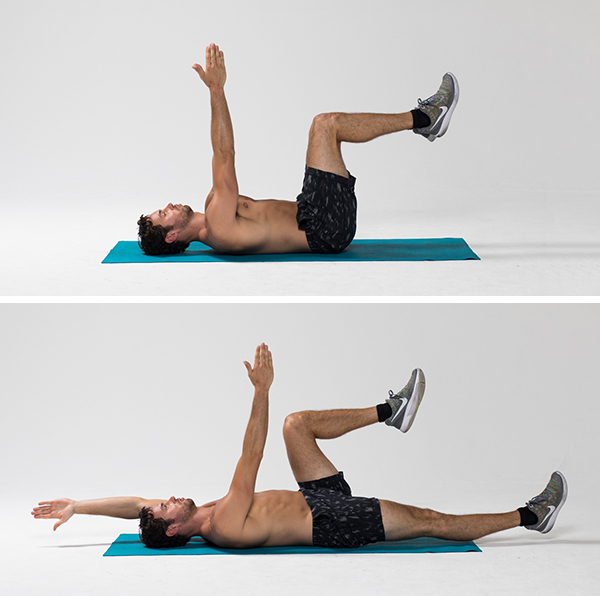
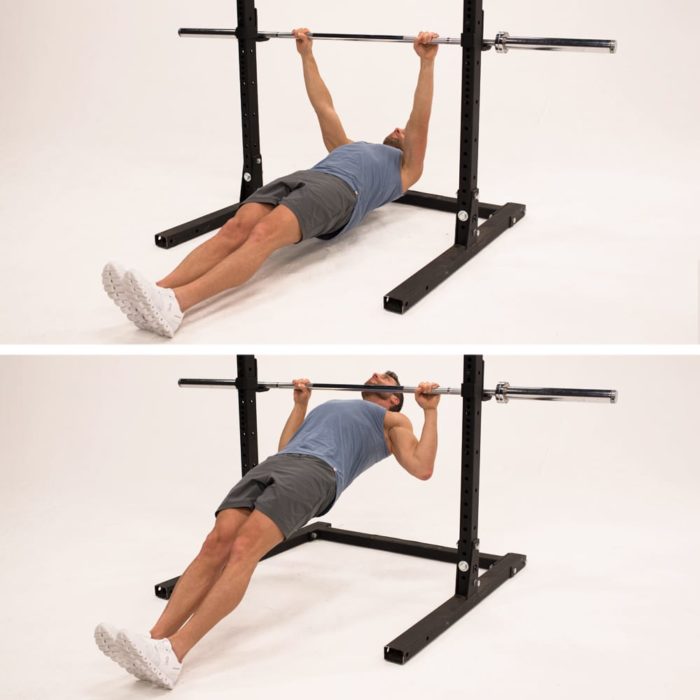
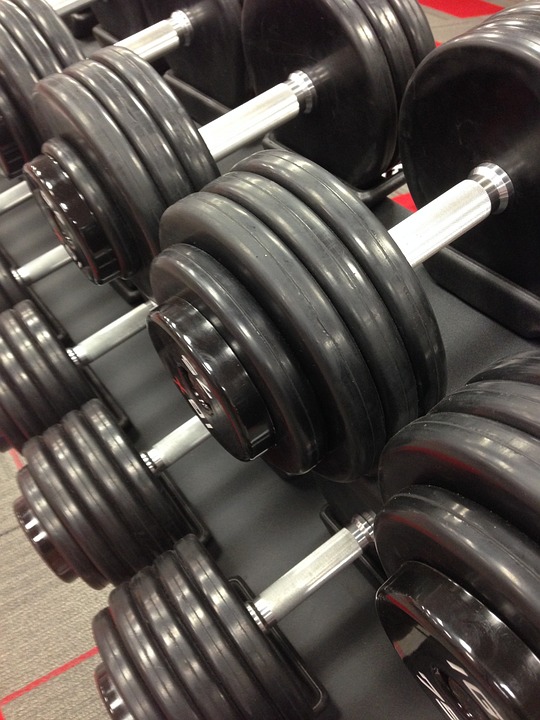
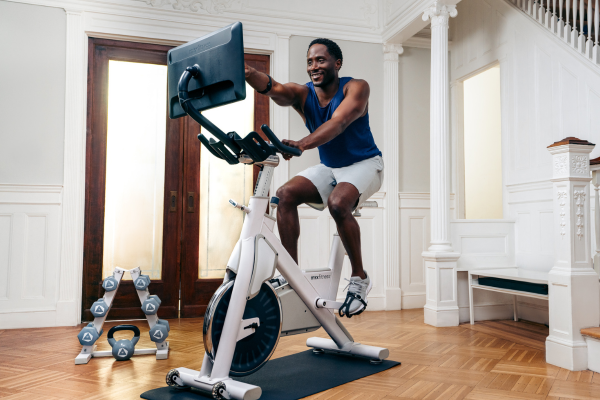
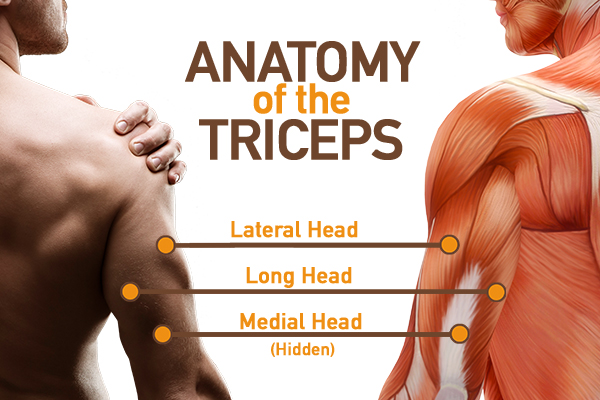
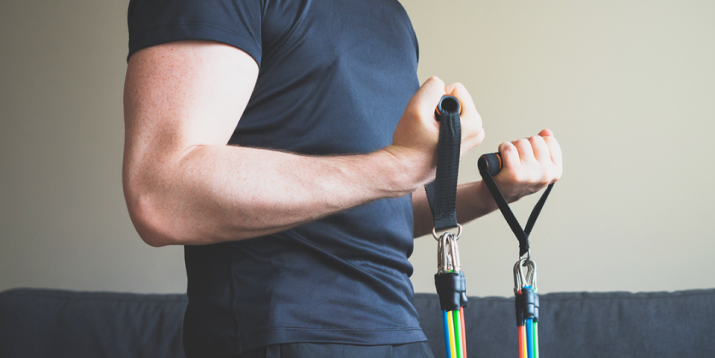
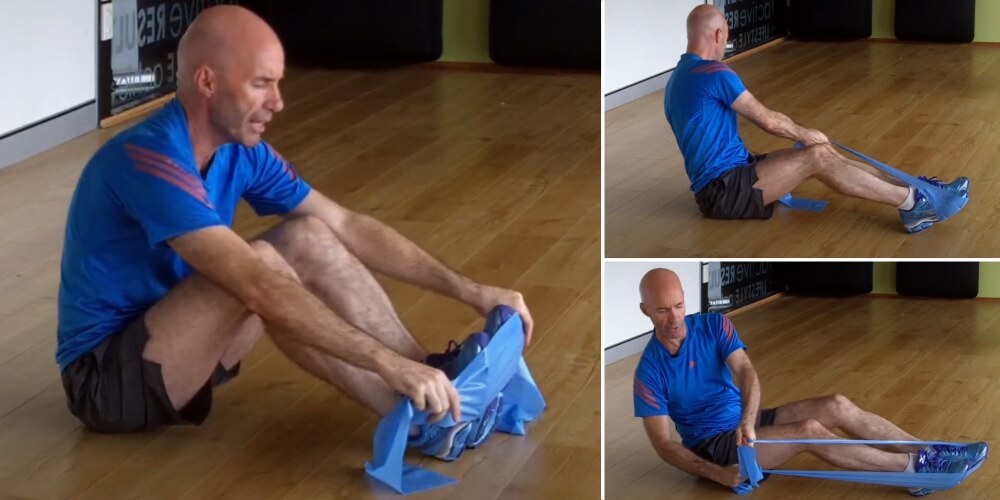
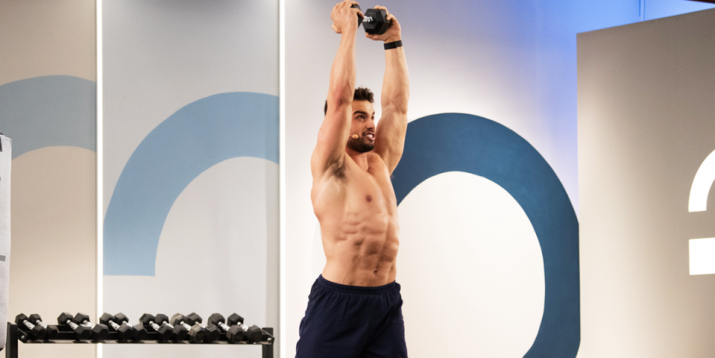

Leave a Reply